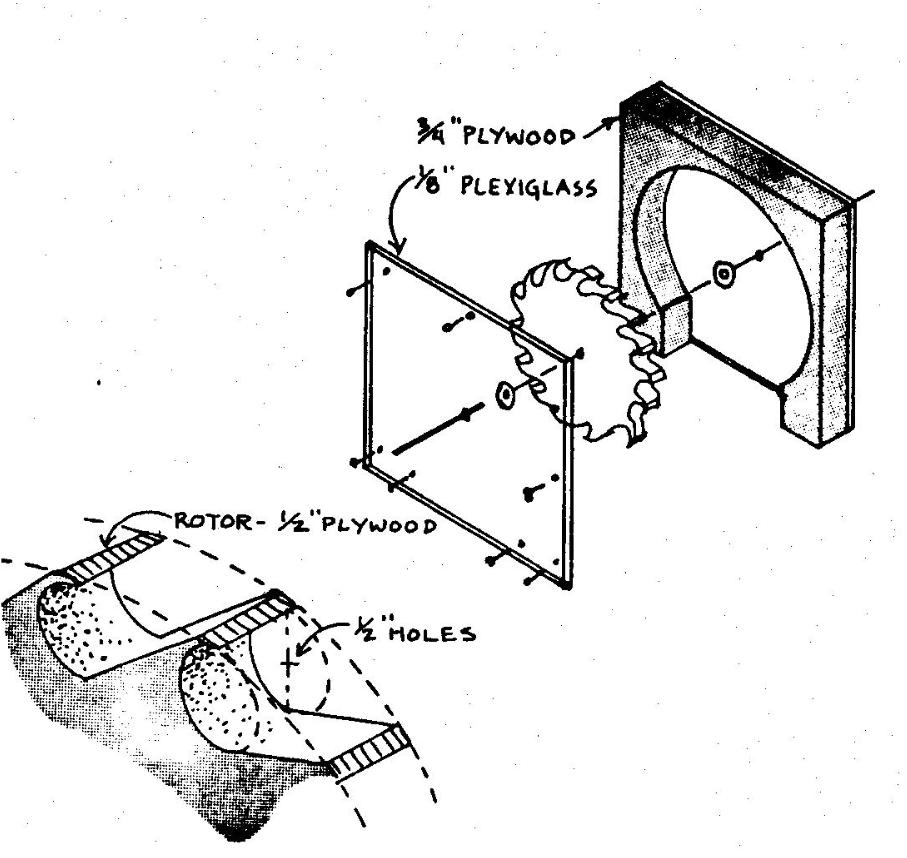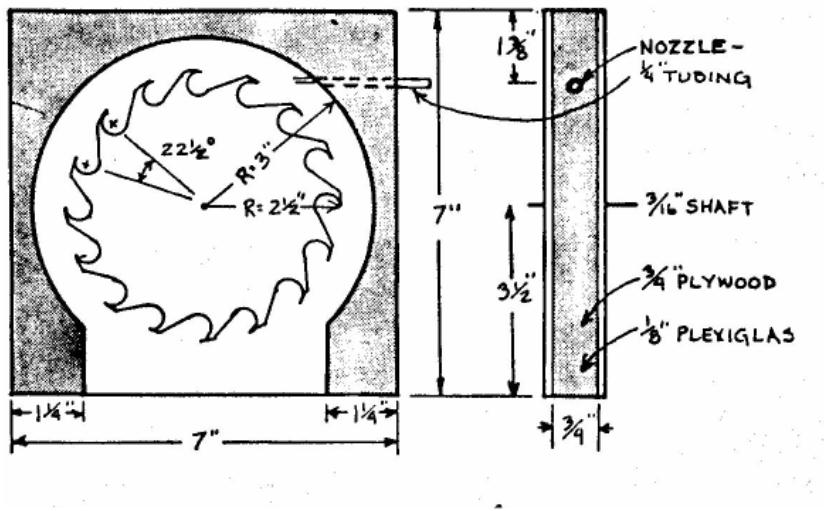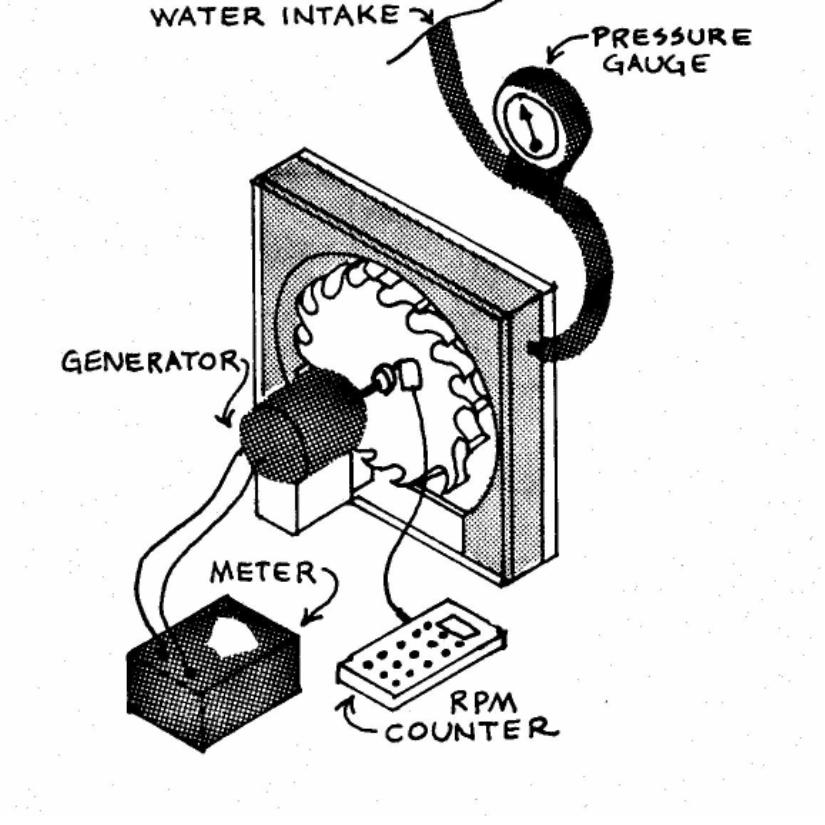Model Pelton Turbine
Pelton: An Impulse Wheel
Water failing over a high head (over 75 ft) develops hundreds of pounds of pressure. When it is released in a jet from a nozzle (such as that of a fire hose), there is tremendous force. If this high-pressure stream were to hit cups attached to a wheel, much of this energy could be turned into rotational energy. A Pelton Wheel has carefully designed cups that split the water jet and redirect it in the opposite direction. The rotor experiences a force as though it had tiny water rockets thrusting from each cup. Although its dimensions are small, considerable force can be developed. In full-scale applications, total diameter of the rotor is seldom more than two feet.
MATERIALS
2) pieces 7" x 7" x l/8" plexiglass
1) 5'' diameter 1/2" plywood disc
1) 7"x7"x3/4" plywood
1) 3/32" x 2" rod
1) Funnel spout or 1/4" tube
24) #6x3/4" round head wood screws
INSTRUCTIONS

1) Lay out and cut the prescribed pattern in the 7" x 7" plywood with band or jig saw. Drill the nozzle hole with drill press, and press the supply tube into it. Leave enough tube, extending so that a hose can be connected to it.
2) Cut the 1/2" plywood disc and mark off 12 holes around the perimeter. Drill these with a drill press. Saw and sand these holes to match contours on plans.
 3) Assemble housing, minus rotor, with screws. Drill 3/32" hole in center of plexiglass. Disassemble and insert rotor on shaft with sufficient spacer washers to fit properly. Reassemble.
3) Assemble housing, minus rotor, with screws. Drill 3/32" hole in center of plexiglass. Disassemble and insert rotor on shaft with sufficient spacer washers to fit properly. Reassemble.
us 
You may attach a small DC motor to the shaft and a water pressure gauge to a T coupling on the incoming water line. Hook up the RPM Counter used in the wind section to study the relationships between RPM, generated volts and water pressure.
If you have a two or more story building, you can make some observations about head and water presssure. Stretch a garden hose up through the second story window. Attach a pressure gauge and a valve at the bottom end. Fill the hose using a funnel. Open the valve. Watch the pressure drop as water runs out of the hose and the water column is decreased.
Repeat the experiment, this time keeping a steady supply of water pouring through the funnel and see if the pressure is sufficient to run the model Pelton Wheel. This is a model of a microhydro power system. Water is taken from a stream through a pipe that travels down the hill. After passing through the Pelton wheel, the water is released into the stream.
